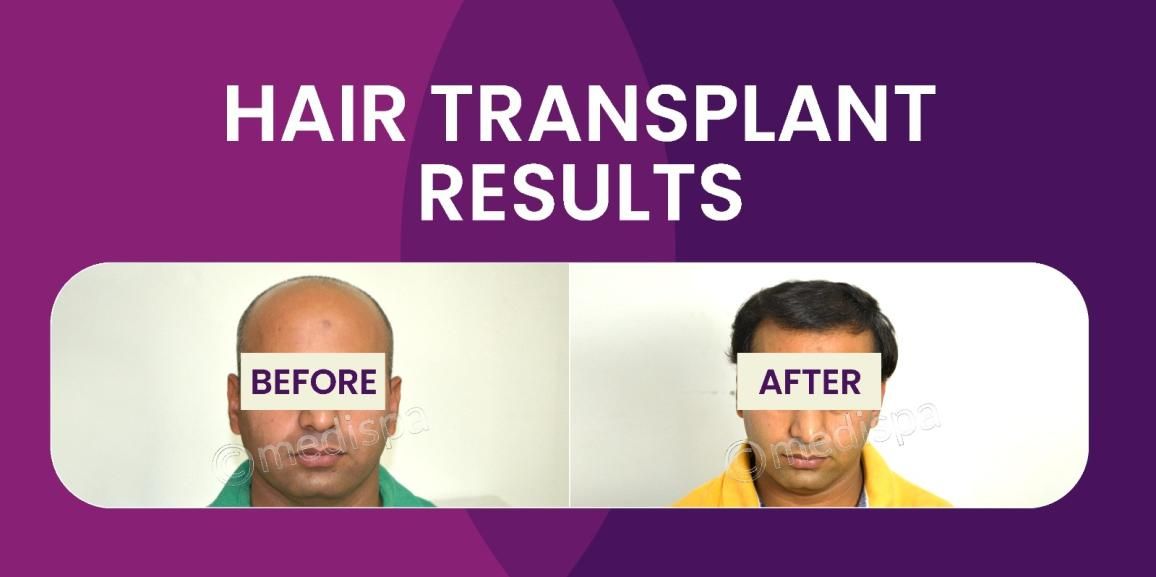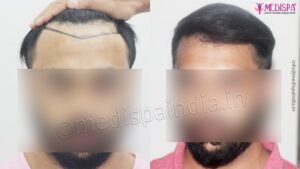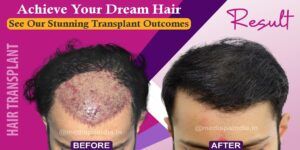
Hair transplants have gained immense popularity for a reason. The upcoming section will delve into the basics of this procedure. Continue reading to discover why opting for hair transplantation is the most optimal choice.
Hair transplantation is a widely favored practice globally. Despite this, only a select few clinics in India have managed to achieve a prestigious reputation on an international scale. Hair transplant in Jaipur is renowned for its exceptional services. Patients from various parts of the world travel to Jaipur in search of top-notch hair transplant treatments. Merely a handful of clinics offer hair transplantation services utilizing cutting-edge techniques and advanced equipment. The best part is that you can receive superior treatment at an affordable cost.
Due to the exorbitant prices of the procedure in their home countries, patients from abroad opt to undergo hair transplant procedures in India. They prioritize quality, and several of Jaipur’s leading clinics excel in providing just that. The hair transplant cost in Jaipur has decreased significantly. This can be attributed to the emergence of new clinics specializing in hair transplantation.
The top hair loss treatment facilities for Medispa can be found in Delhi and Jaipur. We offer a wide variety of hair loss treatments under one roof. Achieve the most effective and durable hair loss outcomes with us. Our hair loss treatment has benefited over 10,000 individuals dealing with hair loss. You can rely on us for a safe and successful hair transplant procedure. For further information on hair transplants, visit our website. Book an appointment for a consultation at the Medispa clinic in Delhi or Jaipur today.
What is hair restoration?
Hair transplantation is a sophisticated surgical technique that entails relocating hair follicles extracted from donor regions to areas experiencing hair loss. The donor region is where the hair follicles are sourced, ideally from areas with permanent hair roots such as the back and sides of the head, chest, axilla, beard, and pubic regions. The success of the procedure depends on having a sufficient supply of hair follicles from these donor sites to achieve the desired coverage. Hair transplant surgery can be performed using either the FUT or FUE method.
Follicular unit transplantation (FUT):
- Follicular unit strip surgery (FUSS) or strip procedure are alternative terms for this procedure. The steps involved in performing FUT are as outlined below:
- Local anaesthetic will be administered to both the donor and recipient areas.
- A scalpel will be utilized to extract a thin strip measuring approximately 1.5 cm from the donor region, which spans from the back and sides of the head from ear to ear.
- The donor area will be meticulously sutured back together using an advanced technique called trichophytic closure, resulting in nearly imperceptible scarring.
- The surgical team will divide the strip into smaller segments and then meticulously harvest each hair graft using a knife under high magnification.
- Each harvested hair follicle typically contains one to four hair follicles.
- The surgeon will create incisions in the bald area where the transplantation is to occur using a blade.
- Subsequently, the hair grafts will be carefully placed into the prepared incisions before being transplanted to the desired location.
- The patient will be provided with post-operative guidelines and scheduled for regular follow-up appointments.
This procedure typically yields around 3000–3500 hair grafts, although the quantity of hair transplants received is primarily influenced by factors such as:
- Hair follicle characteristics
- Hair density in the donor region
- Size of the balding area
- Quality of the hair grafts
Follicular unit extraction (FUE hair transplant):
In order to carry out FUE, it is necessary to follow the following procedures:
- The hair on the donor area of the head is shaved.
- Local anaesthetic is administered to both the donor and the bald area.
- The surgeon uses a round punch surgical device to extract hair follicles individually from the donor location.
- Circular scarring may appear in the donor area, but it will heal naturally.
- Slits are created at the recipient site using a blade.
- The hair grafts are meticulously placed into the designated bald spot.
- Detailed postoperative instructions are provided, and a follow-up appointment is scheduled.
How much does hair transplant cost you in India?
The expense of hair transplant surgery in India is significantly more budget-friendly compared to other developed countries. India has recently gained recognition for offering exceptional hair transplant services that adhere to international standards. Despite this, the cost of hair transplant in India is around 5-6 times lower than in other developed nations. The combination of reasonable prices and top-notch hair transplant surgeons providing excellent services has attracted individuals from all corners of the globe to come to India for hair transplant tourism. The cost of hair transplant in India varies from 60,000 to 400,000 INR, depending on various factors related to the procedure. The most crucial factor influencing the cost is the number of hair grafts needed to cover the bald area. Each hair graft for hair transplant in India typically ranges from 30-130 INR, which varies depending on the clinic’s reputation, the hair transplant surgeon, and the clinic’s location. Hair transplant is considered a one-time investment as it delivers permanent and natural results that you will not regret. For optimal outcomes, consider visiting Medispa hair transplant clinic in India, where Dr. Suneet Soni, a distinguished hair transplant surgeon, practices. You can rest assured that you are in capable hands with Medispa hair transplant clinic, as our entire team is the finest and most extensive in India for hair transplant procedures.
What should be done to care for your hair transplant surgery?
Following a hair transplant procedure, it is crucial to allow the treated area to heal properly. Typically, it takes around 7 to 10 days for the site to fully recover. During this period, you may experience slight swelling on your forehead, along with some discomfort, itching, and numbness. However, these symptoms will gradually fade away within a few days.
To ensure a successful recovery, there are several precautions to be taken post hair transplant. It is advisable to sleep with your head elevated for the initial nights after the procedure. Additionally, wearing a headband as recommended by your doctor is essential.
Moreover, it is important to refrain from alcohol and smoking for at least a week following the hair transplant. Spicy foods and ice creams should also be avoided during this time. It is crucial not to touch or scratch the newly transplanted hairs for at least one week. Activities that lead to excessive sweating should be avoided as well.
Swimming should be avoided for at least a month post hair transplant. Regularly washing your hair as per your doctor’s instructions is vital for proper healing and hair growth. Lastly, maintaining a healthy diet, getting sufficient sleep, and staying hydrated by drinking an ample amount of water are all key elements in the recovery process.







